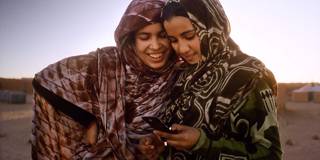The pandemic has exacerbated pre-existing inequalities, not least those disadvantaging women and girls in low- and middle-income countries. Fortunately, with today’s digital technologies, those providing health information and services for girls can reach them directly and privately like never before.
NAIROBI – When COVID-19 first appeared, some called it the “great equalizer,” because viruses do not discriminate according to socioeconomic factors. But we now know that the pandemic has reinforced and amplified pre-existing inequalities, particularly those that disadvantage women and girls. Lockdowns and other restrictions have placed girls at a heightened risk of violence, and have further deprived them of access to education, mobility, health care, and sexual and reproductive health services.

NAIROBI – When COVID-19 first appeared, some called it the “great equalizer,” because viruses do not discriminate according to socioeconomic factors. But we now know that the pandemic has reinforced and amplified pre-existing inequalities, particularly those that disadvantage women and girls. Lockdowns and other restrictions have placed girls at a heightened risk of violence, and have further deprived them of access to education, mobility, health care, and sexual and reproductive health services.